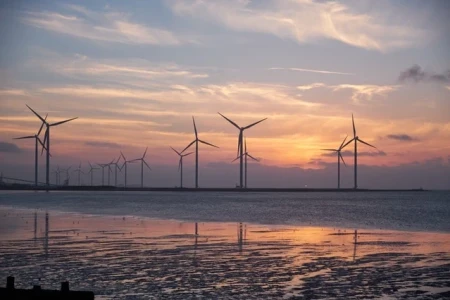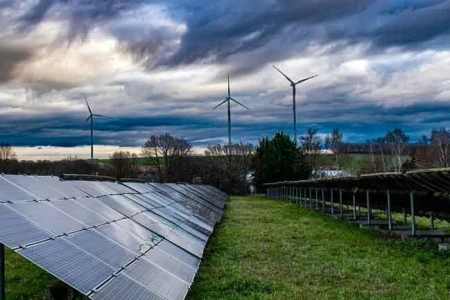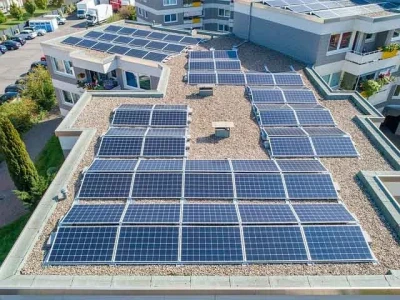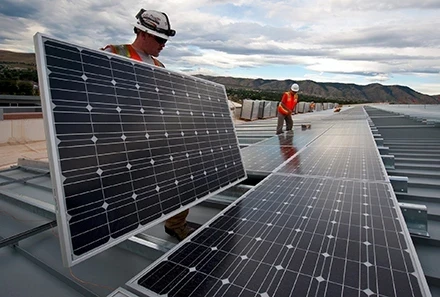Wisconsin Expands Solar Energy with New 250 MW Darien Solar Farm

Wisconsin is significantly boosting its renewable energy capacity with the development of the Darien Solar Farm, a 250-megawatt (MW) solar project located in Walworth County. This initiative marks a substantial step in the state's transition towards cleaner energy sources, contributing to both environmental sustainability and economic growth within the region. The Darien Solar Farm is designed to provide a substantial amount of electricity to the local grid, powering homes and businesses with clean, renewable energy and reducing the reliance on fossil fuels.
Project Overview and Development
The Darien Solar Farm covers a large area, utilizing advanced solar panel technology to maximize energy generation. The project involves the installation of hundreds of thousands of photovoltaic (PV) panels, which convert sunlight directly into electricity. The site's design and layout are meticulously planned to optimize sunlight capture throughout the day, ensuring efficient energy production. The construction phase of the solar farm has created numerous jobs in the local area, providing economic benefits beyond the provision of clean energy. The project developers have emphasized the use of sustainable construction practices, minimizing the environmental impact during the building phase.
The development of the Darien Solar Farm involved a comprehensive planning process, including environmental impact assessments, land use considerations, and community engagement. Regulatory approvals were obtained from state and local authorities to ensure compliance with environmental standards and zoning regulations. The project developers worked closely with local stakeholders to address concerns and incorporate feedback into the project design. This collaborative approach has helped foster positive relationships between the developers, the community, and government agencies, paving the way for a successful project implementation.
Environmental and Economic Benefits
The Darien Solar Farm offers significant environmental benefits by reducing greenhouse gas emissions associated with electricity generation. Solar energy is a clean and renewable source of power, and the use of this facility will displace electricity generated from fossil fuel plants, thereby reducing air pollution and mitigating climate change. The project is expected to avoid a substantial amount of carbon dioxide emissions annually, contributing to Wisconsin's efforts to reduce its carbon footprint. Furthermore, the solar farm's presence will help improve air quality in the region, leading to public health benefits.
In addition to the environmental advantages, the Darien Solar Farm is poised to deliver significant economic benefits to the local community and the state. The construction and operation of the solar farm have created both temporary and permanent jobs, boosting employment in the area. These jobs include positions in construction, maintenance, operations, and support services. The project also generates tax revenue for local governments, which can be used to fund public services such as schools, roads, and infrastructure improvements. Furthermore, the solar farm can attract investment and stimulate economic activity in related industries, such as solar panel manufacturing and energy storage technologies.
Technology and Infrastructure
The Darien Solar Farm utilizes cutting-edge solar panel technology, specifically designed for efficiency and durability. The PV panels are made from high-quality materials and are engineered to withstand various weather conditions, ensuring reliable energy production over the project's lifespan. The solar panels are mounted on racking systems that are optimized for sunlight capture, allowing them to track the sun's movement throughout the day. The power generated by the solar panels is then converted to alternating current (AC) electricity through inverters, which are integrated into the farm's infrastructure.
The project includes the construction of a substation to connect the solar farm to the existing electricity grid. This substation is responsible for transmitting the generated electricity to the grid, where it can be distributed to homes and businesses. The connection to the grid ensures that the generated electricity can be utilized efficiently and effectively, supporting the region's energy needs. The infrastructure also includes advanced monitoring and control systems that allow operators to monitor the performance of the solar farm, ensuring optimal energy generation and operational efficiency. These systems provide real-time data on energy production, equipment performance, and environmental conditions, enabling proactive maintenance and troubleshooting.
Community and Stakeholder Engagement
The developers of the Darien Solar Farm have prioritized community engagement throughout the project's planning and implementation phases. They have conducted public meetings, informational sessions, and site tours to provide updates on the project and address any concerns raised by local residents. The developers have worked closely with local authorities, landowners, and environmental groups to ensure the project aligns with community values and minimizes potential impacts. This collaborative approach has helped build support for the project and ensure it integrates seamlessly into the local landscape.
The project developers have also focused on minimizing the environmental impacts of the solar farm. This includes measures to protect local wildlife habitats, preserve natural resources, and minimize the visual impact of the project. They have implemented erosion control measures, revegetation plans, and other practices to ensure the project is environmentally responsible. Furthermore, the developers have worked with local organizations to support educational initiatives related to renewable energy and environmental sustainability. These initiatives aim to raise awareness about the benefits of solar energy and promote a more sustainable future.
Future Outlook and Impact on Wisconsin's Energy Landscape
The Darien Solar Farm is a key component of Wisconsin's broader strategy to transition to a cleaner energy future. The state has set ambitious goals for renewable energy deployment, and the Darien Solar Farm represents a significant step towards achieving those goals. The project is expected to contribute significantly to the state's renewable energy portfolio, reducing its reliance on fossil fuels and enhancing its energy security. The success of the Darien Solar Farm can serve as a model for future solar projects in Wisconsin, encouraging further investment in renewable energy infrastructure.
The increased availability of clean energy will have a ripple effect across the state. It will make Wisconsin more attractive to businesses looking to reduce their carbon footprint and invest in sustainable operations. The development of the Darien Solar Farm may also lead to the creation of new jobs in the solar energy sector, as well as in related industries. Moreover, as the cost of solar energy continues to decline, it will become increasingly competitive with other sources of electricity, potentially leading to lower energy prices for consumers. Overall, the Darien Solar Farm represents a significant step forward in Wisconsin's journey towards a more sustainable and prosperous future.
Challenges and Considerations
While the Darien Solar Farm offers significant benefits, there are also challenges and considerations associated with its development and operation. One of the key challenges is the intermittent nature of solar energy. The amount of electricity generated by the solar farm fluctuates based on the amount of sunlight available. To address this, the project developers may incorporate energy storage systems, such as batteries, to store excess electricity generated during peak sunlight hours and release it when demand is high or when sunlight is reduced. These storage systems also enhance the reliability of the electricity supply.
Another consideration is the land use impact of the solar farm. The project requires a significant amount of land to accommodate the solar panels and associated infrastructure. Developers must carefully consider the land use implications and work to minimize any negative impacts on the surrounding environment. This can involve implementing landscaping and vegetation plans to integrate the solar farm into the local landscape and protecting sensitive habitats. Additionally, the project developers must comply with all relevant regulations and obtain the necessary permits for construction and operation.
The Darien Solar Farm is a landmark project for Wisconsin, representing a major investment in renewable energy and a commitment to environmental sustainability. The solar farm is expected to provide substantial environmental and economic benefits, including reduced greenhouse gas emissions, job creation, and increased tax revenues. By utilizing advanced solar panel technology and integrating into the existing electricity grid, the project aims to deliver reliable and clean energy to homes and businesses in the area. The development of the Darien Solar Farm exemplifies the growing trend towards renewable energy in the United States and showcases Wisconsin's dedication to a cleaner, more sustainable future.








